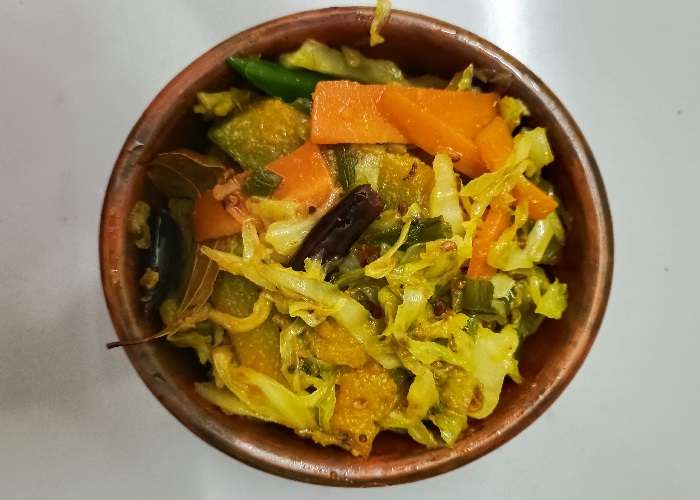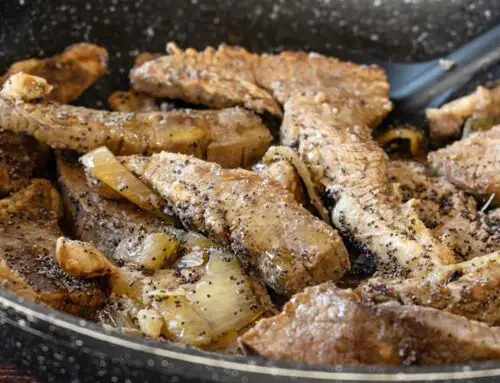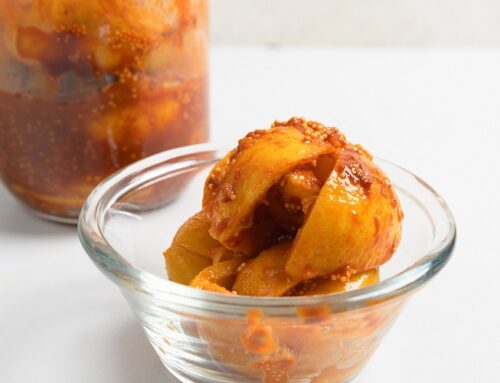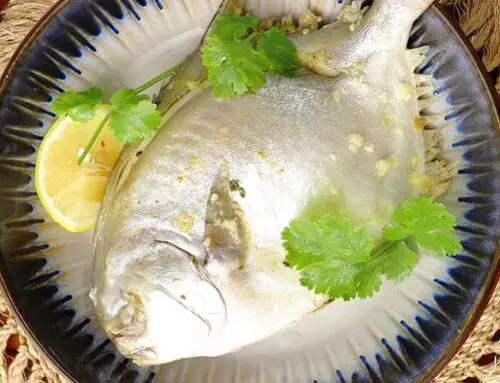Niramish Torkari Recipe
So if you give a Hindu family and a non Hindu family to cook Niramish Torkari with the same base vegetables, the final dish would be wildly different because of their choice in other ingredients like onions. The non Hindu dish would contain onions and other ingredients according to the cook’s wish, while the Hindu dish would avoid onions to be truly considered as Niramish.
So what is niramish? Niramish or means anything without protein, the breakdown of the name correctly translates to that. But the Niramish we are talking about today is a vegetable curry. It’s made only, and only with vegetables so the name kinda makes sense. When we consider protein food, it’s usually fish, meat, or eggs. And the vegetable curry we are cooking has none of those animal proteins, so it is Niramis. But the dish can contain vegetable proteins like chickpeas, spinach, etc. so Niramis as a word is completely void of protein, but as a dish Niramis or Niramish-Torkari (Curry) is only void of animal proteins, not vegetable protein.
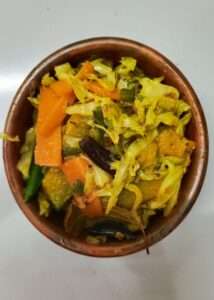
Since most bengali niramish recipe are just vegetable curries, there are a lot of different varieties of dishes that can be called Niramish. And the dish has more varieties because of the difference in culture as well, particularly because of the difference in Hindu culture. I have discussed this in Generation of Flavors before, and anyone from the subcontinent would be familiar with the fact that Hindu vegans avoid onion, garlic, and ginger as well. I do not know the religious scripture thoroughly to provide an explanation for this, but it is what it is.
So if you give a Hindu family and a non Hindu family to cook Niramis Torkari with the same base vegetables, the final dish would be wildly different because of their choice in other ingredients like onions. The non Hindu dish would contain onions and other ingredients according to the cook’s wish, while the Hindu dish would avoid onions to be truly considered as Niramis.
The Hindu style of Niramis creates another kind of dish, one without onion, garlic. For example, there is normal khichuri and there is Niramish khichuri (without onions), there is also vegetable khichuri but that can have onions. Even fish curry and lentil soup is made without onions. And these dishes taste really good and I would highly recommend sometimes cooking without onions.
Today’s simple niramish recipe does not use any onions either. So there is no doubt about it being Niramis. The other vegetables used cabbage, sweet pumpkin, cauliflower, and other vegetables I don’t really like. You can change up the recipe to any way you want and add other vegetables. The recipe itself is pretty easy, as you can see.
Niramish curry is more popular during winter in Bangladesh. It’s because the amount of vegetables available during winter increases by a few fold. Not just in the produce yield, but also in variety. Cauliflower, my favorite vegetable, is only available during winter. So if someone in Bangladesh wants to cook Niramis, winter is the best time to do so. But that does not mean you can’t cook it in any other season, you’d just have to be creative with the recipe.
If you are cooking niramish curry, I would suggest having Khichuri with it. Especially if the weather is on the colder side. Trust me, nothing beats khichuri and Niramis on a cold day. Well, khichuri and ilish mach bhaja (hilsha fish fry) could beat it but that is not the point. Khichuri and Niramish is my favorite way to have Niramis. These two items together are also served in many hindu temples.
You can also have Niramish bhaji with parata or ruti. It is a great breakfast option which gives you all the health benefits of the vegetables you used to make the Niramish. My least favorite way to have Niramish is with boiled rice. It is in no means bad, my parents love it. It is not just my cup of tea, or bowl of vegetables.
Ingredients
- 2 tbsp oil
- 2 pc bay leaf
- 1 tsp five season spice
- 3 pc dry chilli
- 3 cups of vegetable
- 1 tsp turmeric
- 2 pc chilli
- 1 tsp ginger paste
- ½ tsp sugar
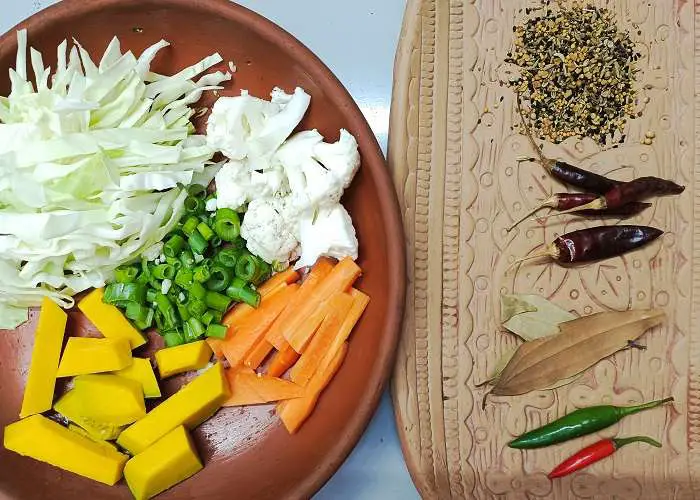
Instructions
- In a pan pour some oil along with bay leaf, five season spice, dry chili and fry it.
- Next add all the vegetables and stir it.
- Then add a bit of turmeric, chilli and ginger paste to it.
- When the cooking is done add more ginger paste and sugar to it.
- Ready to serve.

